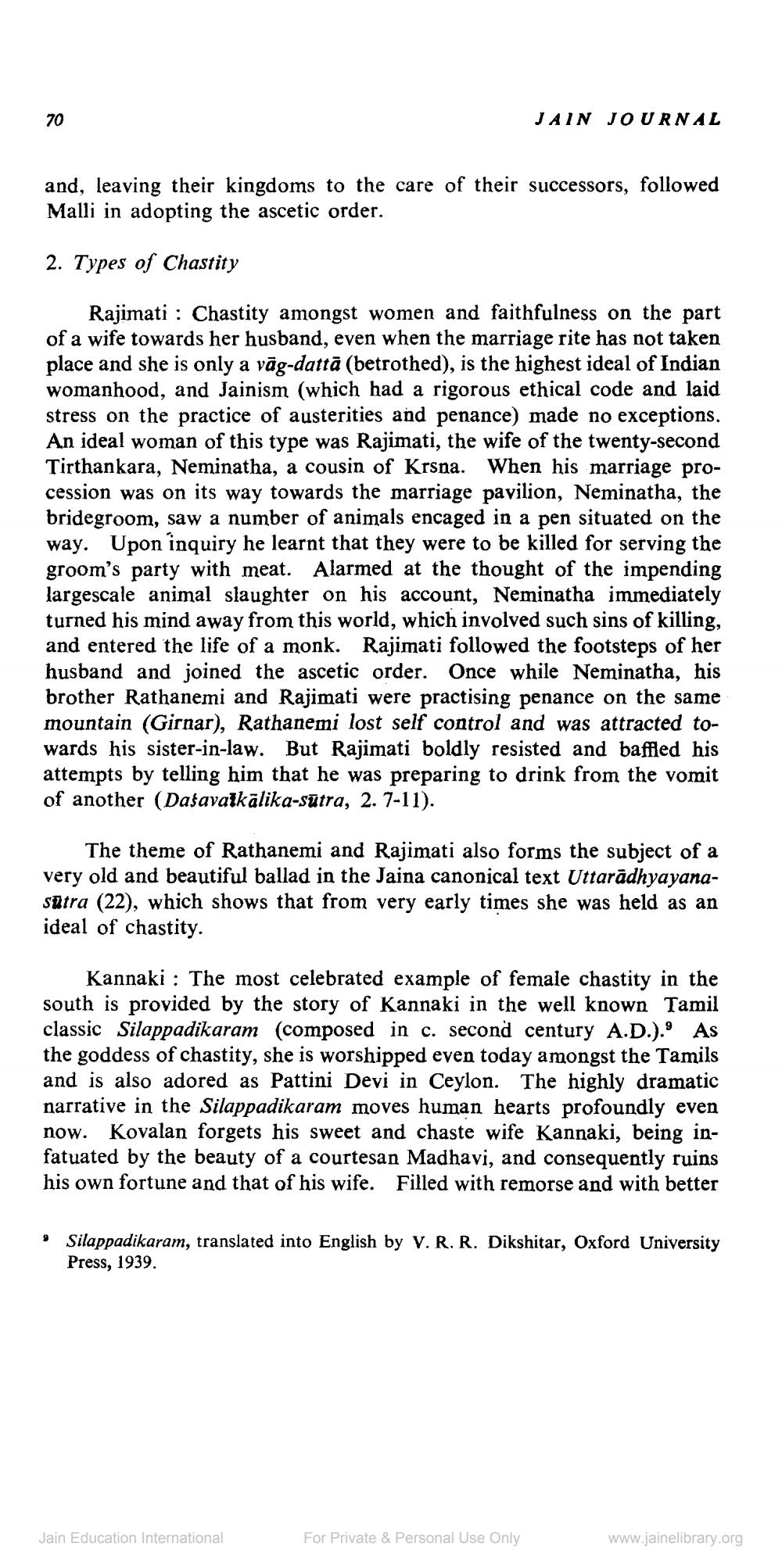________________
70
JAIN JOURNAL
and, leaving their kingdoms to the care of their successors, followed Malli in adopting the ascetic order.
2. Types of Chastity
Rajimati : Chastity amongst women and faithfulness on the part of a wife towards her husband, even when the marriage rite has not taken place and she is only a vāg-dattā (betrothed), is the highest ideal of Indian womanhood, and Jainism (which had a rigorous ethical code and laid stress on the practice of austerities and penance) made no exceptions. An ideal woman of this type was Rajimati, the wife of the twenty-second Tirthankara, Neminatha, a cousin of Krsna. When his marriage procession was on its way towards the marriage pavilion, Neminatha, the bridegroom, saw a number of animals encaged in a pen situated on the way. Upon inquiry he learnt that they were to be killed for serving groom's party with meat. Alarmed at the thought of the impending largescale animal slaughter on his account, Neminatha immediately turned his mind away from this world, which involved such sins of killing, and entered the life of a monk. Rajimati followed the footsteps of her husband and joined the ascetic order. Once while Neminatha, his brother Rathanemi and Rajimati were practising penance on the same mountain (Girnar), Rathanemi lost self control and was attracted towards his sister-in-law. But Rajimati boldly resisted and baffled his attempts by telling him that he was preparing to drink from the vomit of another (Dašavalkālika-sutra, 2. 7-11).
The theme of Rathanemi and Rajimati also forms the subject of a very old and beautiful ballad in the Jaina canonical text Uttarādhyayanasutra (22), which shows that from very early times she was held as an ideal of chastity.
Kannaki : The most celebrated example of female chastity in the south is provided by the story of Kannaki in the well known Tamil classic Silappadikaram (composed in c. second century A.D.). As the goddess of chastity, she is worshipped even today amongst the Tamils and is also adored as Pattini Devi in Ceylon. The highly dramatic narrative in the Silappadikaram moves human hearts profoundly even now. Kovalan forgets his sweet and chaste wife Kannaki, being infatuated by the beauty of a courtesan Madhavi, and consequently ruins his own fortune and that of his wife. Filled with remorse and with better
Silappadikaram, translated into English by V.R.R. Dikshitar, Oxford University Press, 1939.
Jain Education International
For Private & Personal Use Only
www.jainelibrary.org




